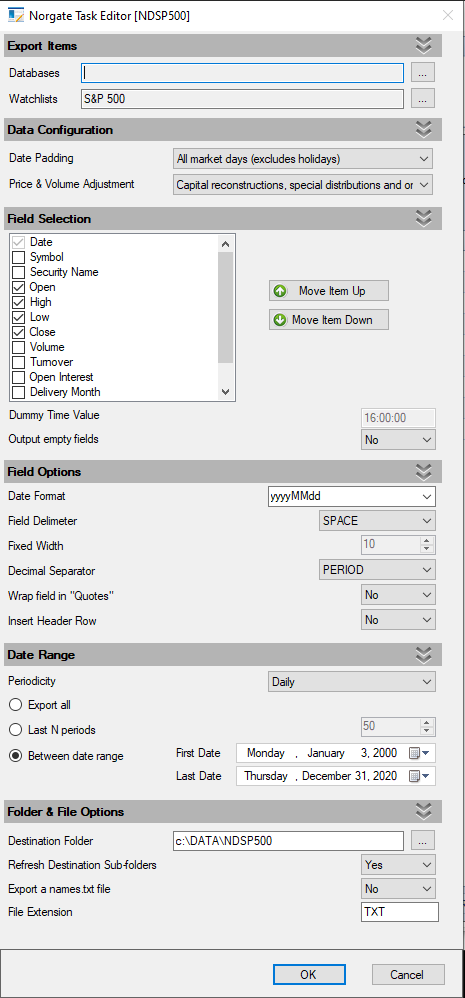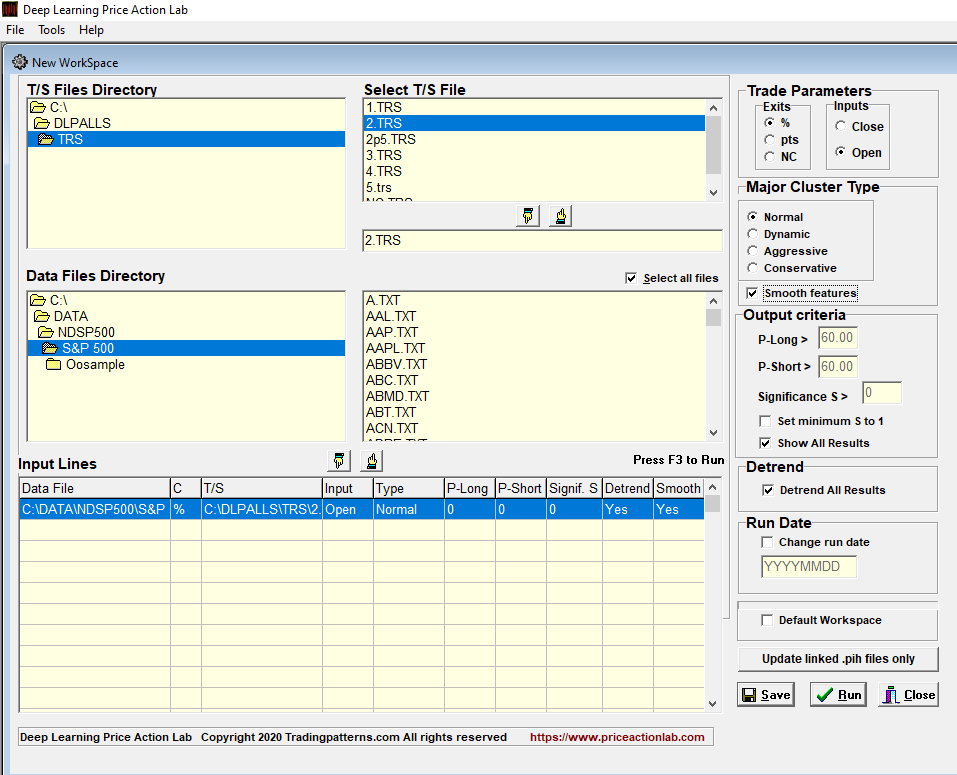Instructions on how to use the Export Task Manager of Norgate Data updater to export data for use with DLPAL software.
When using historical data in backtests or for generating signals it is important to have the cleanest series possible. Free data are available and can be useful in some cases after checking and correcting any errors, for example for looking at longer-term trends. But for more demanding tasks, for example those that use equity data from specific indexes, handling delistings and correcting errors can be a daunting task. In these cases, data from a reliable vendor can make the difference between significant results and noise/errors.
We use Norgate data. For major indexes the data include current and past constituents to remove survivorship bias in backtests. We highly recommend this data service (we do not have a referral arrangement with the company.)

We selected the SP500 watchlist in this example but any other list can be used for other scans.
Note that we start exporting after 1999 because the 90s uptrend introduces a long bias in our analysis and in this particular case we do not want that. In other cases, all available history may be desired.
Also note that we elect to Refresh Destination Sub-folders due to index delistings in this case. When generating signals we would like to have only the active symbols in the export list.
In this particular example we export daily data but weekly are also available.
The next step is to use the data in DLPAL. Below is an example of a DLPAL LS workspace for calculating features based on the S&P 500 stocks for use in a long/short strategy.
It takes a few minutes every day to update and export the data and then we run DLPAL LS (actually many instances of the program working with multiple watchlists.)
We also export data for multiple ETFs and run DLPAL DQ for daily signals.
In the ETF case we use all available data. Below is a relevant DLPAL DQ workspace.
If you have any questions contact us.
If you found this article interesting, you may follow this blog via RSS or Email, or in Twitter










